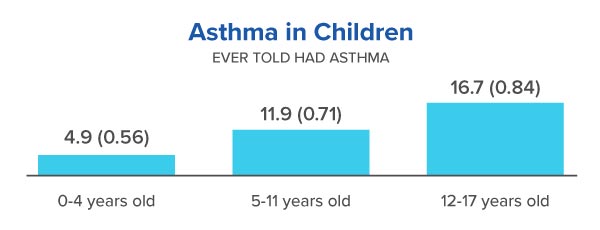Share this
4 Ways Dust & Mold in Schools Make Students Sick
by HEPACART on May 13, 2021
Students, teachers, and staff can get sick and stay sick if the problems aren't addressed.
Let's talk about school air quality. COVID-19 may be on the wane, but building-related illness in schools and other public buildings — a problem that existed long before the pandemic — is not.
From improper HVAC maintenance and inadequate ventilation to airborne mold spores and school construction dust, many things can cause children, teachers, and staff to get sick and stay sick for the duration of the school year if the problems aren't addressed.
The U.S. Environmental Protection Agency (EPA) says it's not uncommon for indoor air pollution levels to be two to five times higher than outdoors — and sometimes much higher than that. Since people spend 90% of their time indoors, poor indoor air quality (IAQ) is a major health problem.
It gets worse:
- There are roughly four times as many people per square foot in a school as in an office building.
- School children are more susceptible than adults to illness from indoor air contaminants, with a surprisingly large proportion of children aged 0–17 years having asthma — one in 12 as of 2016. There is evidence that exposure to allergens such as dust mites and molds triggers asthma symptoms.
- Dust, dirt, mold, pollen, bacteria, and pet dander can cause allergic reactions in children whether they're asthmatic or not, resulting in coughing, sneezing, headaches, dizziness, nausea, eye irritation, sinus congestion, shortness of breath, and other mild to severe allergic reactions.
- Schools have unique challenges such as pollution from art and science materials, industrial and vocational arts activities, home economics classes, and gyms.
Source: CDC Health Statistics
Because of the pandemic, school facility managers are perhaps more keenly aware now of the importance of indoor air quality and are looking for effective solutions, such as:
- Finding sources and correcting causes of mold.
- Testing and maintaining HVAC systems regularly.
- Investing in air filtration and purification equipment.
- Using dust containment carts for maintenance and duct/ceiling work.
- Employing reusable wall barriers during construction and renovation projects
This post will look at how the school environment can be improved to prevent building-related illness that interferes with students getting a good education.
Mold Detection and Mitigation
Here's how a minor roof leak, a dirty carpet, and a perfectly functioning HVAC system can work together to wreak havoc on indoor air quality.
![]() 1. Water from the leaking roof reaches the carpet, wetting the dirt and the mold that has been dormant there.
1. Water from the leaking roof reaches the carpet, wetting the dirt and the mold that has been dormant there.
![]() 2. The mold grows and releases spores into the air that can cause various infections.
2. The mold grows and releases spores into the air that can cause various infections.
![]() 3. The HVAC system disperses the spores to every corner of the school building. Not everyone will suffer allergic reactions, but a significant number of building occupants will.
3. The HVAC system disperses the spores to every corner of the school building. Not everyone will suffer allergic reactions, but a significant number of building occupants will.
Sometimes the HVAC system itself is the sole culprit. Mold can grow in ductwork, drip pans, coils, and humidification equipment. And mold can grow in carpets and furnishings.
To detect mold, look for spatial patterns in the complaints, isolating to a specific area if possible. Mitigation is easier if you can nail down where to focus. If you call in professionals, they will know what to do, but basic steps in mitigation are:
- Locate the cause of the problem (e.g., leaky roof or clogged HVAC drains)
- Correct the problem
- Clean and disinfect all areas where mold was growing
- Test to make sure mold is gone
HVAC Maintenance
The many and varied ways in which heating, ventilation, and cooling systems contribute to unhealthy indoor air quality can be boiled down to two basic problems: inadequate maintenance or incorrect system design.
Here's the EPA's advice on the importance of maintenance:
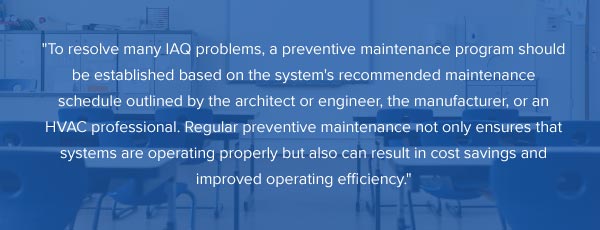
The very first step, then, is to make sure maintenance and inspection are being carried out on a routine basis. A written maintenance and inspection program should contain a checklist that is easily followed.
For two of the main HVAC components most likely to contain mold, a checklist would have such items as:
Cooling Coils
- Monthly (or as required) inspections during operation
- Removal of dirt, slime, and mold, as required
- Upstream filters are operating properly
Drain Pans, drainage systems
- Monthly inspection (or, as required)
- Drains are maintained in free-flowing condition
- No accumulation of stagnant water
- No buildup of slime, mold, or dirt
- Removal of dirt, slime, and mold, as required
- Sample water for microbes, as required
Filtration System
- Routine inspection
- Provision for measuring pressure drops across the filtration system
For the complete checklist from which this excerpt was drawn, see the OSHA document Indoor Air Quality in Commercial and Institutional Buildings.
Another issue is humidity control. HVAC systems are supposed to deliver thermal comfort and ventilation by providing "conditioned" air, created by mixing outdoor and recirculated air and filtering, heating, or cooling it. However, what is sometimes missed is that the effectiveness of HVAC and its role in minimizing the spread of pollutants is enhanced if it is equipped to control humidity within a healthy range.
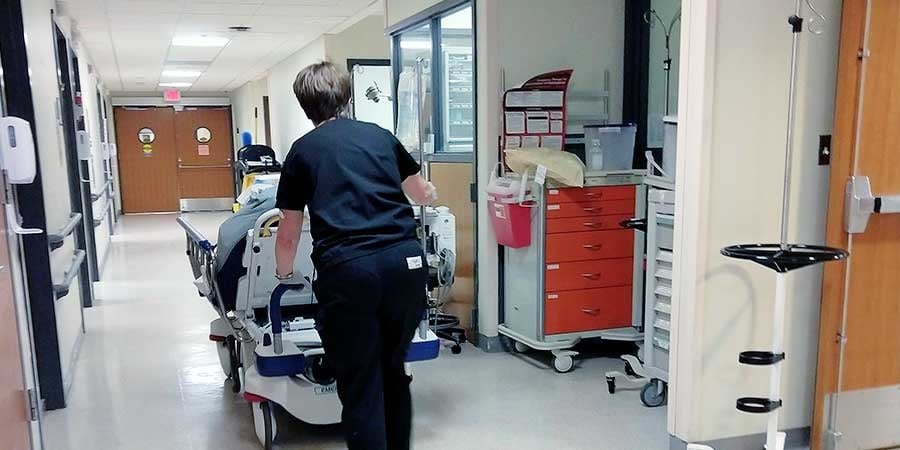
Step two is to hire experts to review HVAC system design in search of improvements. One possible upgrade might start with determining whether the system can accommodate filters with a higher MERV rating.
Another upgrade might involve adjusting ventilation. Proper ventilation (mixing of outside air with recirculated air) is sometimes challenging to get right. For instance, in rooms where the number of occupants varies widely, such as auditoriums or gyms, the system needs to know how much fresh air is needed. To ensure the system diverts more outside air into the room when it is fully occupied, CO2 sensors can be installed to be read by system controls. At times when the space is unoccupied or nearly so, the system knows to reduce outside air, saving energy.
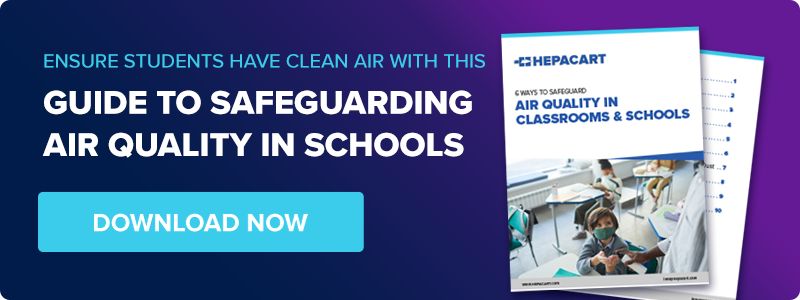 Air Purification
Air Purification
Commonly used in healthcare environments, supplemental air purifiers are a powerful tool that can help make the indoor air in classrooms safe to breathe. With HEPA filters and far-UVC light disinfection, units such as the GermBuster Far-UVC Room Air Purifier with UV-FORCE® destroy pathogens and scrub the air of 99.97% of 0.3-micrometer particles. If hospitals trust these air purification units and others to reduce the likelihood of transmitting pathogens causing coronavirus, influenza, measles, and tuberculosis, then you can trust that they’d work well in your school buildings, keeping students safe all year — especially through traditional cold and flu season.
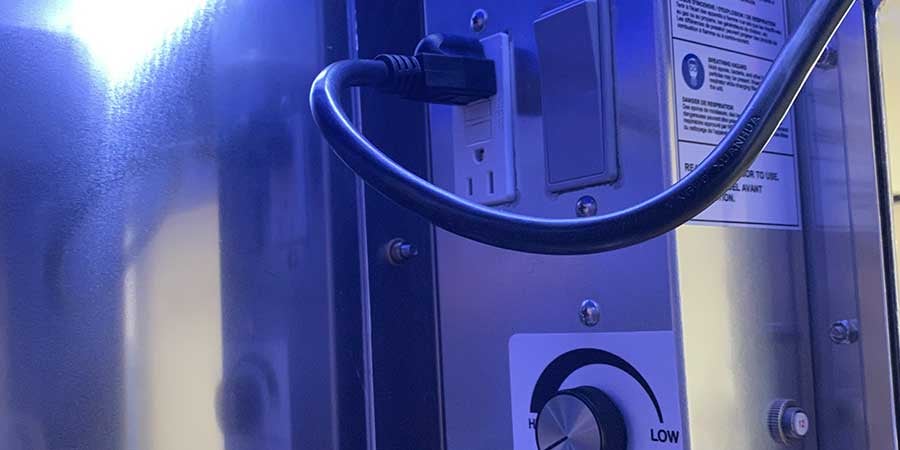
Dust Containment
Any discussion of indoor air quality must include mention of the dangers posed by school maintenance and school construction. Dust lying atop ceiling tiles can circulate throughout a building once disturbed by workers who have to run data lines or do other work above a drop ceiling. Building temporary dust barriers with clear plastic sheeting, and moving them from place to place, is a big time-waster. To make above-ceiling maintenance far more efficient, use a dust containment cart such as the HEPACART or DUSTBUGGY.
If you're expanding your building or doing a major renovation, portable dust containment walls such as those from STARC Systems are the way to go. They are far more time-efficient, sturdy, and finished-looking than temporary barriers built with plastic or drywall. For single-room renovation, an AnteRoom can be added over the room entrance and connected to a negative pressure machine, such as the HEPAFORCE®AIR Negative Air Machine & Scrubber, to keep harmful dust inside. To get a better idea of what's available and when and how to use it, read The Complete Guide to Dust Containment Units.
Resources
- Reference Guide for Indoor Air Quality in Schools (EPA)
- Planning Guide for Maintaining School Facilities (NCES)
- IAQ Tools for Schools Action Kit (EPA)
- Ventilation Checklist (PDF) (EPA)
- Indoor Air Quality in Commercial and Institutional Buildings (OSHA)
- 4 Ways to Combat Sick Building Syndrome (HEPACART Blog)
